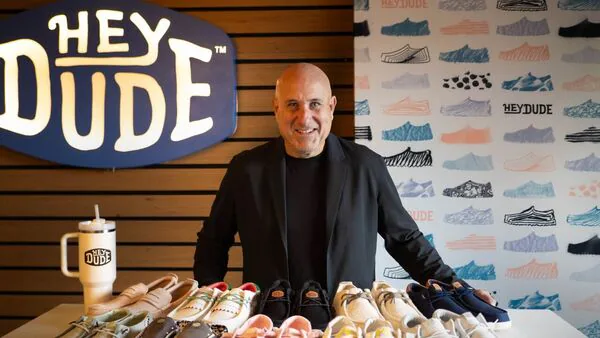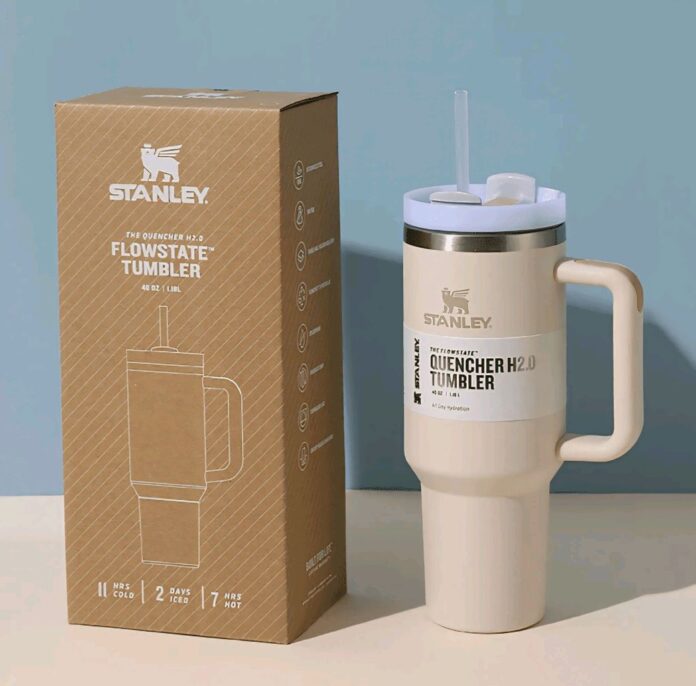These days, trends come and go faster than you can scroll past them on TikTok. One minute it’s all about a viral lip gloss, the next it’s some obscure kitchen gadget. But somehow, in the middle of all that noise, one item has held its ground and even gained cult status: the Stanley Quencher. You’ve probably seen it. That big, sturdy steel tumbler clutched by moms at school pickup, influencers at the gym, and practically everyone on your feed. At first glance, it might look like just another water bottle but clearly, it’s more than that.
If you’ve caught yourself thinking, “Wait, what’s the deal with this cup?”
The truth is, the Stanley Cup’s rise to fame wasn’t just lucky timing. It was the result of a carefully crafted marketing strategy that took a 100-year-old, no-frills brand and turned it into a modern-day lifestyle statement.
So how exactly did a brand once known for grandpa’s camping gear become one of the trendiest items of the year?
A Boring Brand Gets a Glow-Up

Stanley wasn’t new. Founded in 1913, it had long been the go-to for outdoorsy folks and blue-collar workers needing reliable drinkware. But by the late 2010s, it was largely forgotten in mainstream retail. That changed in 2020 when Terence Reilly, former CMO of Crocs, took over as Stanley’s president. If you’re familiar with the Crocs comeback, you already know Reilly’s playbook: take a product everyone underestimates, lean into its quirks, and turn online infamy into fame.
He did it with Crocs, embracing their “ugliness” and turning them into a fashion statement through smart celebrity collaborations, limited-edition drops, and direct engagement with social media communities. By 2021, Crocs stock had surged to $180 per share from just $13.
At Stanley, Reilly saw the same potential, this time in a stainless steel tumble
The Cup That Changed Everything
Before 2020, Stanley’s 40-ounce Quencher was an afterthought. It was underperforming so badly that the company had actually stopped marketing or even restocking it. The turnaround started in the most unlikely of places: Mormon “momfluencers” in Utah.
The Buy Guide, an affiliate-marketing site popular in that demographic, began singing the praises of the Quencher. With its generous size, handle, and ability to fit in car cupholders, the tumbler was a hit. Stanley took notice and partnered with them, launching an affiliate program that rewarded fans for driving sales. It was grassroots, community-first marketing and it worked.
By 2022, headlines like “The Sisterhood of the Stanley Tumbler” began appearing. The product, once overlooked, had become a symbol of lifestyle aspiration. And then things really took off.
Emotion Goes Viral
Fast forward to late 2023. A woman named Danielle posted a TikTok showing her car destroyed by fire, with one surprising survivor: her Stanley cup. Still intact. Still full of ice.
The video exploded with more than 95 million views. Instead of just reposting the moment, Reilly did something even better, he made it human. Stanley responded with a video not only sending Danielle new tumblers but also pledging to replace her car. That moment of empathy created a deep connection between the brand and its audience.
Since then, Stanley has kept the momentum going with limited edition drops, exclusive Target collaborations, and even seasonal collections like the Watermelon Moonshine Quencher in partnership with country star Lainey Wilson. The cups sold out in minutes and now resell for hundreds, sometimes thousands, online. Target shoppers stampede through aisles. Influencers display shelves lined with every color imaginable.
From Utility to Identity: What’s Actually Happening?
This isn’t just about hydration anymore.
What Stanley has tapped into is the psychological power of personal branding through consumption. The Stanley Cup isn’t just a tumbler, it’s a lifestyle accessory. A way to signal identity. Whether you’re a mom, a student, or a content creator, there’s a Stanley for you. There are even charm accessories to personalize your cup, just like Crocs’ Jibbitz.
But Will It Last?
Here’s the million-dollar question: Is this just a fad?
After all, remember Hydro Flask? It too had its viral moment, but now you’ll find stacks of them on discount racks at HomeGoods. TikTok is an unforgiving place for brands, today’s obsession is tomorrow’s punchline.
New brands like Owala are already creeping in, offering similar functionality with a fresh edge. In the age of endless updates and trending news, relevance can vanish overnight. That’s why brands need more than hype. They need substance and Stanley may have just that, thanks to its history and product quality.
Why Stanley Matters for Marketers
I find Stanley’s rise nothing short of brilliant. It’s a case study in modern branding alchemy, where community, nostalgia, and Internet virality collide. But what I admire most is how they didn’t try to be something they’re not. They amplified what they already were, and invited people into that story.
This isn’t just marketing, it’s cultural storytelling. And that’s where the magic happens.
So, whether you’re building a legacy brand or launching something new, remember: your product doesn’t have to be new. It just needs the right story, at the right time, in the right place.
And maybe a little TikTok sparkle.
Follow Adchronicle for more latest updates


